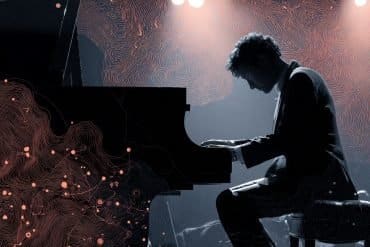Summary: Seeing faces in objects—known as face pareidolia—triggers a powerful attentional response, according to a new study. Researchers compared how people react to real averted gazes versus imagined gazes from face-like objects and found both draw attention, but through different mechanisms.
While real faces guide our eyes through specific cues like eye direction, pareidolia activates a broader, more holistic attention pattern. This stronger response to imagined faces may have practical applications in advertising and design.
Key Facts:
- Pareidolia Power: Face-like objects capture attention more strongly than real averted gazes.
- Different Mechanisms: Real faces direct attention through specific features; pareidolia uses overall structure.
- Marketing Potential: Using face-like designs may boost consumer attention in product advertising.
Source: University of Surrey
If you have ever spotted faces or human-like expressions in everyday objects, you may have experienced the phenomenon of face pareidolia.
Now, a new study by the University of Surrey has looked into how this phenomenon grabs our attention, which could be used by advertisers in promoting future products.
The study, published in i-Perception, investigated the differences between our attention being directed by averted gazes – when a subject looks away from another subject’s eyes or face – and when it’s directed by pareidolia – imagined face-like objects.
The researchers conducted four “gaze cueing task” experiments with a total of 54 participants, to measure how our attention is influenced by the direction of another subject’s gaze.
They found that participants consistently shifted their attention in response to the appearance of both averted gazes and pareidolia.
However, the underlying mechanisms through which attention is drawn are quite different. While we are primarily drawn to the eye region of averted gazes, we are drawn to pareidolia’s holistic structure of their “faces”, and as a result, experienced a stronger response and attention.
Dr Di Fu, Lecturer in Cognitive Neuroscience at the University of Surrey, said:
“Our research shows that both averted gazes from real faces and perceived faces in objects can direct where we look, but they do so through different pathways. We process real faces through focusing on specific features, like the direction of the eyes.
“However, with face-like objects, we process their overall structure and where their “eye-like features” are positioned, resulting in a stronger attention response.”
The findings of the study may have implications that go beyond a better understanding of how our brain processes information. Dr Fu adds:
“Our findings may have practical implications too, particularly in areas like product advertising. Advertisers could potentially incorporate face-like arrangements with prominent eye-like elements into their designs, increasing consumer attention and leaving a more memorable impression of their products.”
About this visual perception and pareidolia research news
Author: Melanie Battolla
Source: University of Surrey
Contact: Melanie Battolla – University of Surrey
Image: The image is credited to Neuroscience News
Original Research: Open access.
“How face-like objects and averted gaze faces orient our attention: The role of global configuration and local features” by Di Fu et al. i-Perception
Abstract
How face-like objects and averted gaze faces orient our attention: The role of global configuration and local features
In real life, people perceive nonexistent faces from face-like objects, called face pareidolia. Face-like objects, similar to averted gazes, can direct the observer’s attention.
However, the similarities and differences in attentional shifts induced by these two types of stimuli remain underexplored.
Through a gaze cueing task, this study compares the cueing effects of face-like objects and averted gaze faces, revealing both commonalities and distinct underlying mechanisms.
Our findings demonstrate that while both types of stimuli can elicit attentional shifts, the mechanisms differ: averted gaze faces rely on processing local features like gaze direction, whereas face-like objects leverage their global configuration to enhance attentional shifts by triggered eye-like features.
These findings advance the understanding of the processing mechanisms underlying the perception of face-like objects, and how the brain represents facial attributes even when physical facial stimuli are absent.
This study provides a valuable theoretical foundation for future investigations into the broader applications of face-like stimuli in human perception and attention.







